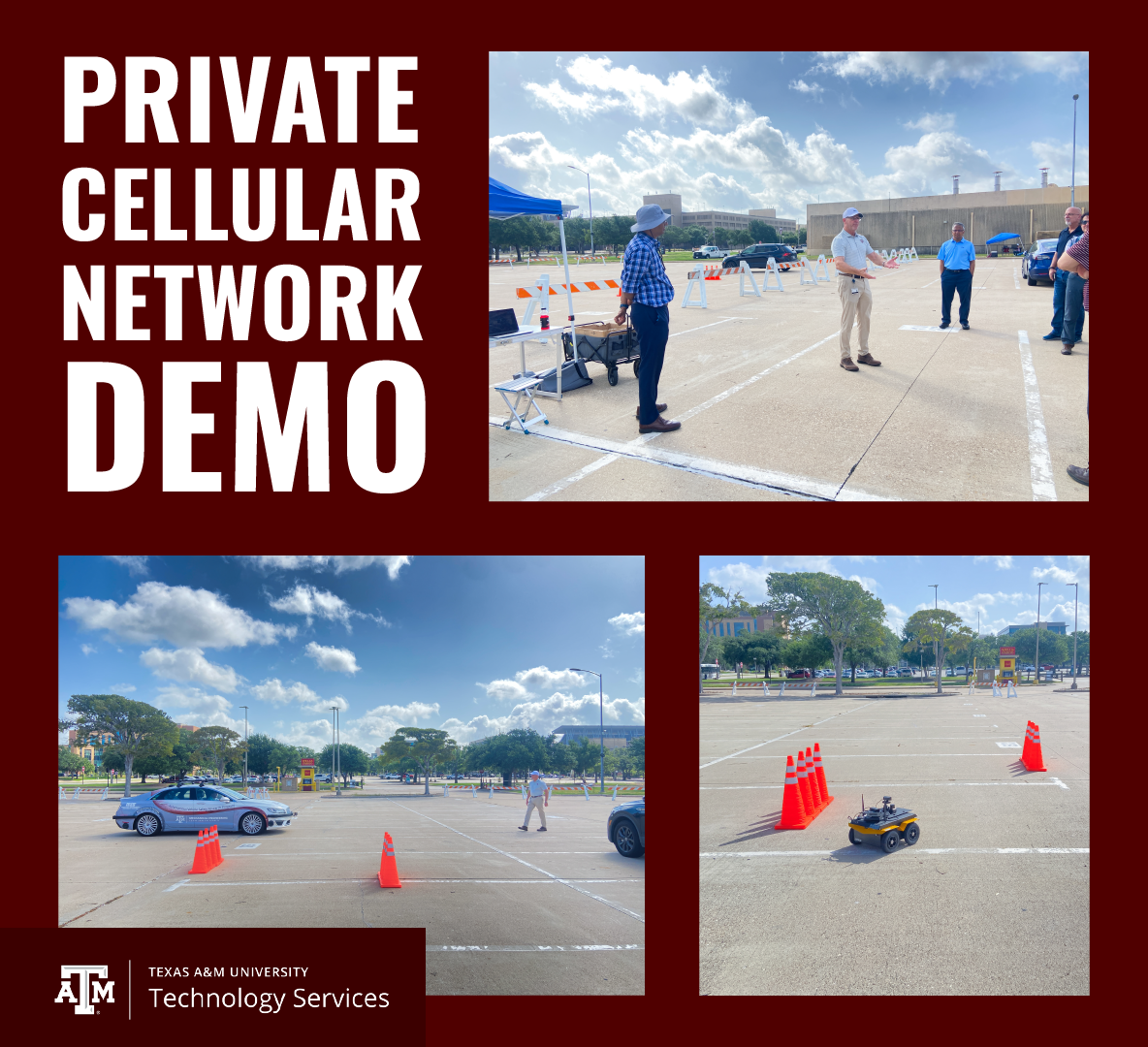July 19, 2024

Texas A&M University’s Technology Services department partnered with researchers on autonomous automobile and unmanned ground vehicle (UGV) projects to demonstrate its state-of-the-art private cellular network.
The autonomous automobile demonstration, led by Dr. Swaminathan Gopalswamy, Research Professor in Mechanical Engineering, highlighted the use of on-board sensors to perceive the environment and plan movements. On-board sensors are limited by their range, field of view, and potential occlusions from obstacles. To overcome these limitations, Dr. Gopalswamy’s team extended sensor coverage by integrating smart infrastructure hubs with edge-computer and communication capabilities. The edge-computer systems utilize raw sensor information and video feeds from cameras mounted on light poles to generate real-time data on the position, velocity, and orientation of the vehicle and nearby dynamic obstacles. The system computes the probability of potential accidents, and wirelessly transmits, in real time, warning measures to the vehicles, enhancing their situational awareness and driving safety.
“As our campus community’s needs and expectations change, it is important that we align our technology to empower innovation,” said Ed Pierson, Vice President for Information Technology and Chief Information Officer. “Texas A&M’s private cellular network offers benefits to a broad range of communities, including public safety, parking, research, and campus event operations, and we look forward to expanding the network to cover more areas of campus.”
In addition to the autonomous automobile, a team led by Dr. Srinivas Shakkottai, Professor of Electrical and Computer Engineering, remotely controlled a Jackal Unmanned Ground Vehicle (UGV) using the private cellular network. Operators stationed a mile away in the Wisenbaker Engineering Building managed the UGV with real-time video and laser scan data, enabling precise navigation and obstacle avoidance. This experiment demonstrated the network's capability to support low-latency, high-bandwidth applications essential for responsive UGV operations and exemplified connected intelligence, enabling new applications via distributed sensing, computing and communication.
Texas A&M's private cellular network utilizes a fully licensed cellular spectrum in the 2.5GHz range, and operates independently of traditional phone carrier networks. It offers high bandwidth, low latency, and unparalleled reliability, with coverage extending over a 1-2 mile radius and the capacity to support hundreds of devices with high-speed, dedicated access. Currently, the network's antenna and transmitter are located on the university's West Campus near Reed Arena and Olsen Field, with plans to expand to the main campus in the future. Texas A&M’s Transportation department also utilizes the private cellular network for large events, including the recent George Strait concert, to support parking operations when the public cellular networks are congested.
The successful live demonstration of these autonomous systems showcases the potential applications of Texas A&M's private cellular network in enhancing research and operational capabilities on campus. From environmental monitoring to logistics, healthcare technologies, and real-time data analytics, the network promises to revolutionize various initiatives, propelling Texas A&M to the forefront of technological advancements in higher education.